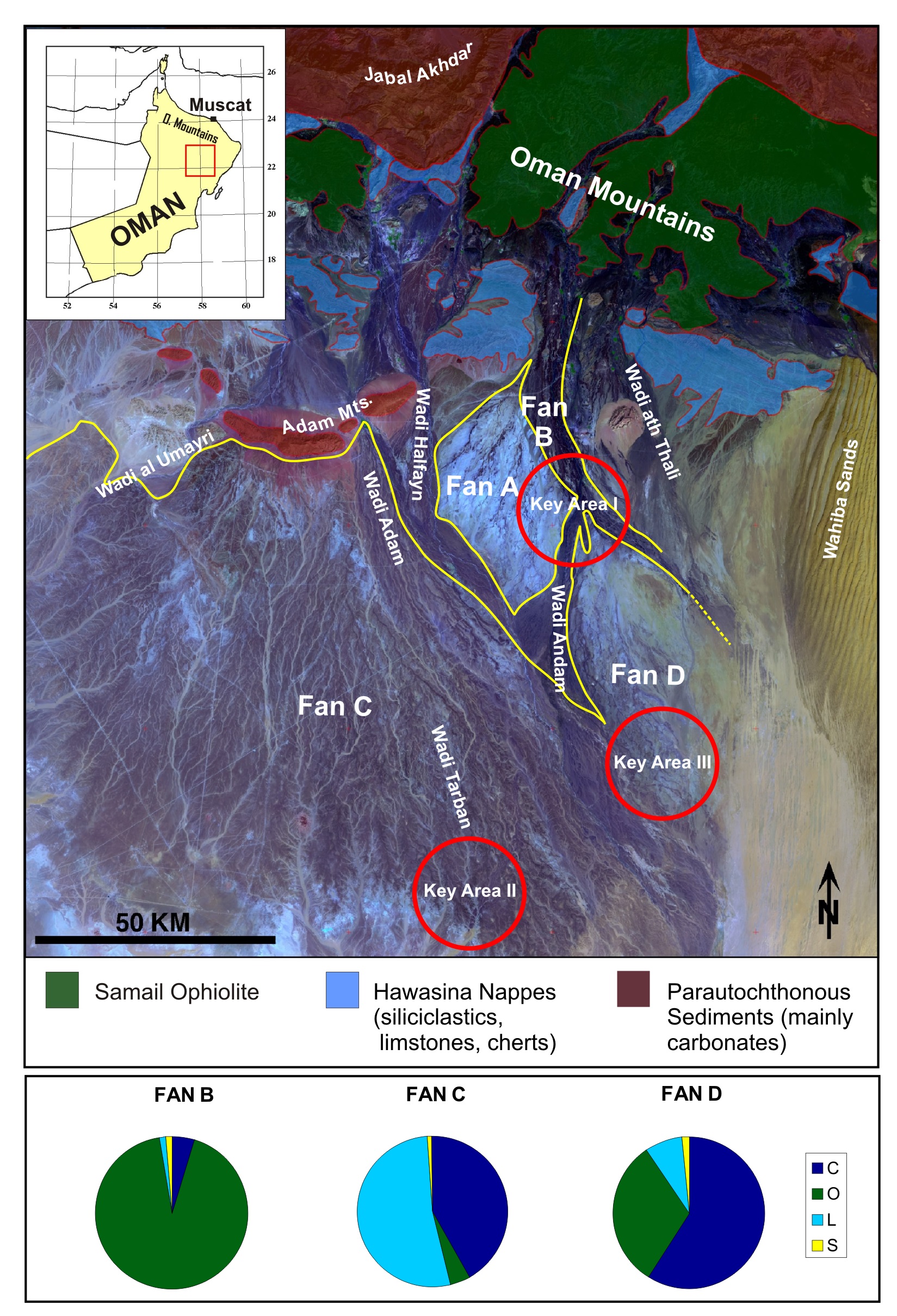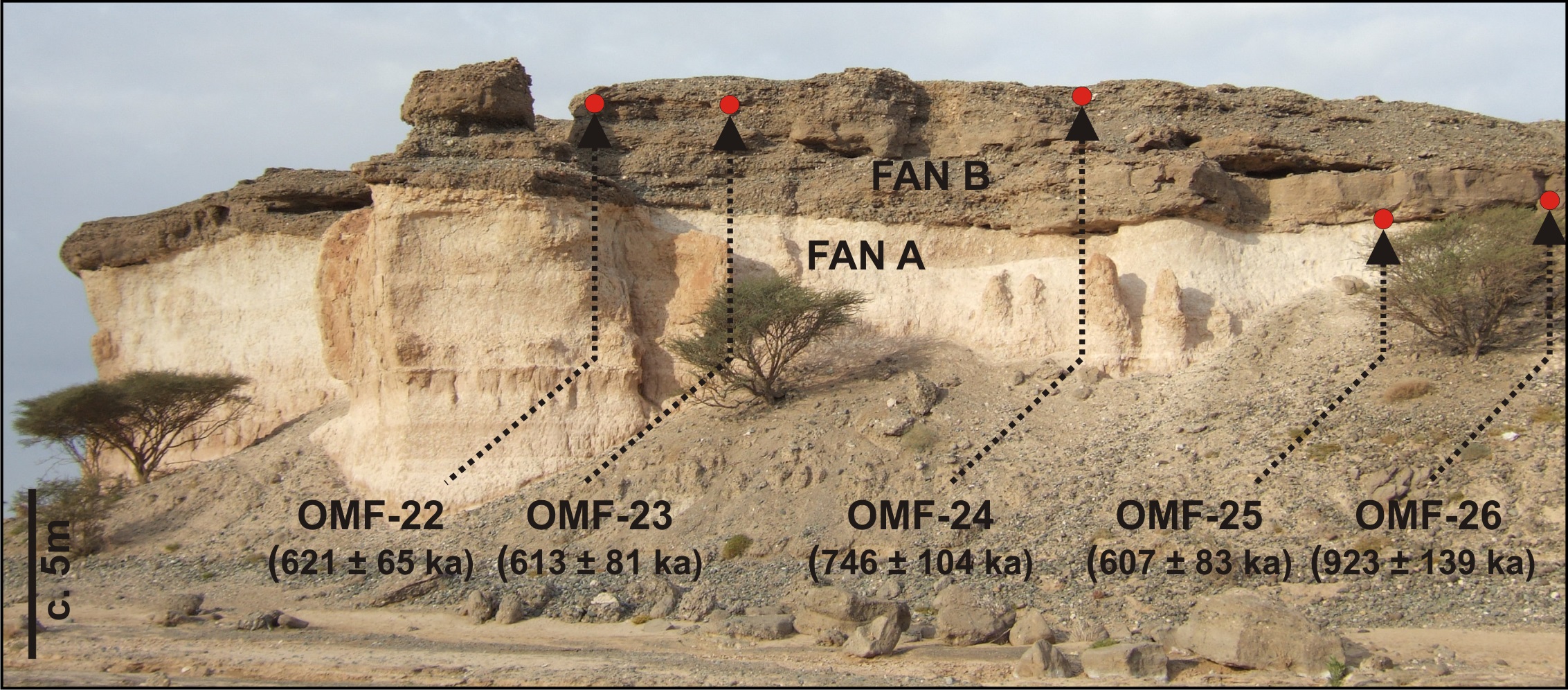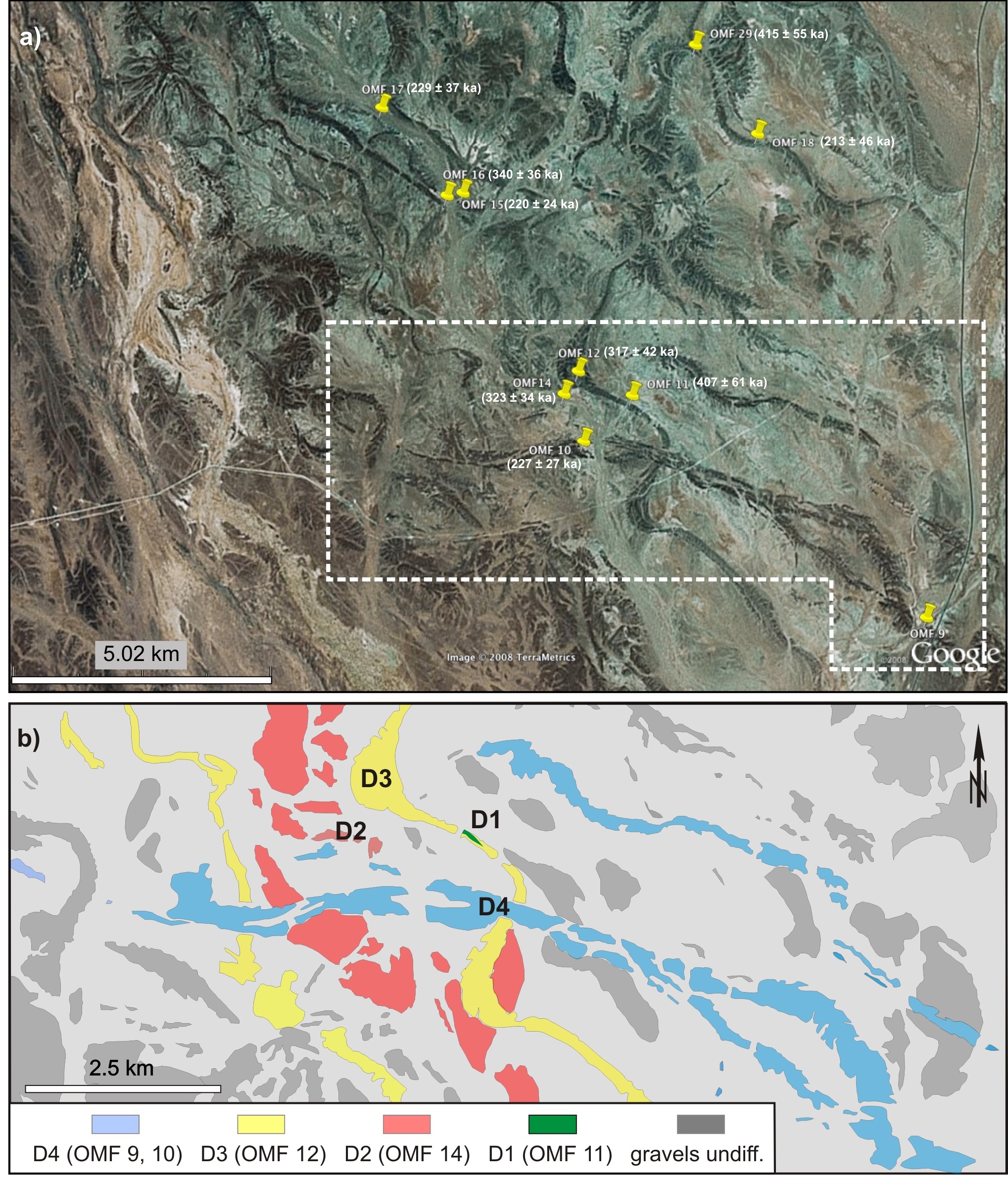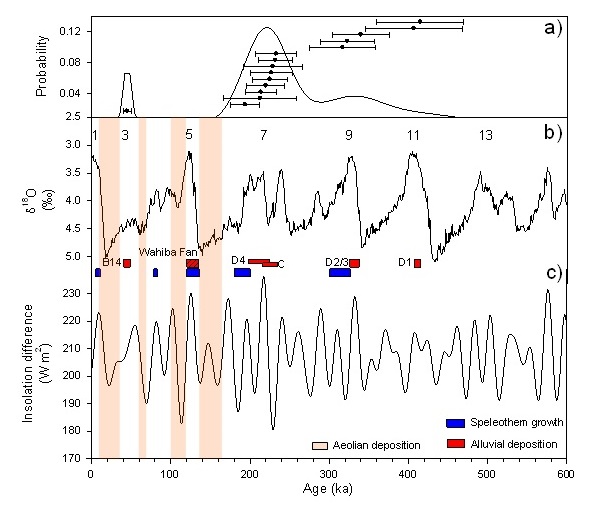Monsoon triggered formation of Quaternary alluvial megafans in the interior of Oman
|
A vast bajada consisting of coalescing low-gradient alluvial fans exceeding 100 km in length formed along the south-western margin of the Oman Mountains. It comprises an old fan sequence of inferred Miocene to Pliocene age termed Barzaman Formation, diagenetically highly altered to dolomitic clays, and a thin veneer of weakly cemented Quaternary gravels. A combination of remote sensing, lithological analyses and luminescence dating is used to interpret the complex aggradation history of the Quaternary alluvial fans from the interior of Oman in the context of independent regional climate records.
From satellite imagery and clast analysis four fans can be discerned in the study area. |
 |
 |
Outcrop photograph of the Pink Cliffs area located in the northern part of the present Wadi Andam drainage system and OSL ages. Note the sharp erosive contact between the Barzaman Formation (Fan A) and the overlying channel deposits of Fan B. |
|
Satellite image showing complex channel pattern of key area III and location of sites dated by OSL. White line indicates the the area coverd by figure 8b. The map shows the with major palaeochannel generations (D1 to D4) of key area III. OSL ages: Fan D4: 194±18 ka, 227±27 ka Fan D3: 317±42 Fan D2: 323±34 Fan D1: 407±61 |
 |
 |
While two early periods of fan formation are tentatively correlated to the Miocene-Pliocene and the Early Pleistocene, luminescence dating allows the distinction of five phases of fan aggradation during the Middle-Late Pleistocene. These phases are correlated with pluvial periods from Marine Isotope Stage (MIS) 11 through 3, when southern Arabia was affected by monsoonal precipitation. It is concluded that the aggradation of the alluvial fans was triggered by the interplay of increased sediment production during arid periods and high rainfall with enhanced erosion of hillslopes and transport rates during strong monsoon phases. |

